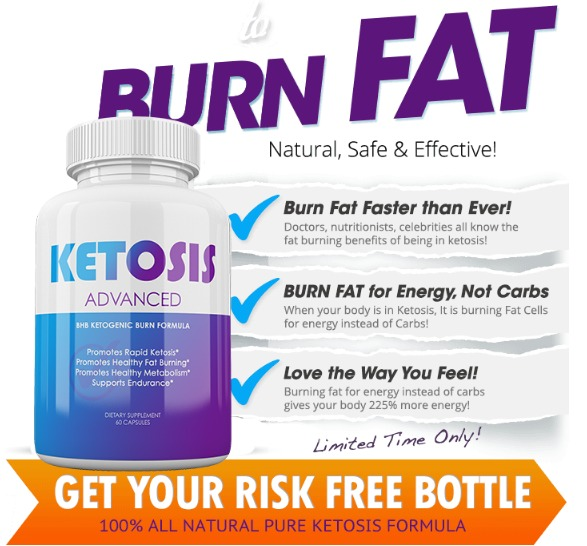Losing fat and gaining muscle can be achieved by combining regular strength training exercises with a balanced and healthy diet. To achieve optimal fitness goals, it is crucial to find the right balance between losing fat and gaining muscle.
Many individuals aspire to have a lean and toned physique, but it can be challenging to navigate through the vast amount of information available on this topic. However, by incorporating a well-structured strength training routine and adopting a nutritious diet, you can effectively shed unwanted fat while simultaneously building muscle mass.
This article will guide you on this transformative journey, providing useful insights, strategies, and tips to help you attain a healthier and more aesthetically pleasing body composition. So, let’s explore the key principles and best practices for successfully losing fat and gaining muscle.
The Importance Of Losing Fat And Gaining Muscle
Understanding body composition, or the ratio of fat mass to muscle mass in your body, is crucial for achieving a fit and healthy physique. This article will delve into the significance of losing fat and gaining muscle, highlighting the numerous benefits that come with maintaining a balanced body composition.
Understanding Body Composition
Body composition refers to the proportion of fat, muscle, bones, and other tissues that make up your body. It is not just about the number on the scale, but rather the distribution of these components. Achieving a healthy body composition involves concurrently reducing body fat while increasing muscle mass.
When it comes to weight loss, many people focus solely on shedding pounds on the scale. However, this approach fails to account for the fact that losing fat and gaining muscle are not mutually exclusive. In fact, when you aim to improve body composition, you must focus on building lean muscle mass while reducing excess fat.
Increasing muscle mass is essential for several reasons. Firstly, muscles are highly metabolically active, meaning they require energy even when at rest. By increasing your muscle mass, you boost your resting metabolic rate, enabling your body to burn more calories throughout the day.
Benefits Of A Balanced Body Composition
Achieving a balanced body composition, with lower levels of body fat and higher muscle mass, offers a wide range of benefits beyond just aesthetics. Let’s explore a few of the advantages:
- Improved metabolic health: Higher muscle mass and lower body fat help regulate blood sugar levels, reduce the risk of type 2 diabetes, and improve insulin sensitivity.
- Enhanced physical performance: Increasing muscle mass improves strength, endurance, and overall athletic performance.
- Increased bone density: Resistance training, necessary for building muscle, also promotes bone health, reducing the risk of osteoporosis and fractures.
- Better body mechanics: Strong muscles support better posture, balance, and joint stability, reducing the risk of injuries.
- Boosted self-confidence: Achieving a fit and toned physique can increase self-esteem and body image, leading to improved mental well-being.
By focusing on improving body composition rather than solely chasing weight loss, you create a sustainable and healthier approach to fitness. So, whether your goal is to lose fat, gain muscle, or both, understanding the importance of body composition is key to achieving optimal results.

Credit: medium.com
Strategies For Losing Fat
When it comes to losing fat and gaining muscle, having a well-thought-out strategy is crucial. In this post, we will focus on effective strategies for losing fat. This includes following effective diet plans and engaging in optimal cardio workouts.
Effective Diet Plans
An effective diet plan plays a significant role in losing fat. It helps maintain a caloric deficit, which is important for weight loss. Here are some key points to consider when following a diet plan:
- Focus on whole, nutrient-dense foods such as fruits, vegetables, lean proteins, and whole grains.
- Avoid or limit sugary drinks, processed foods, and high-fat snacks.
- Drink plenty of water throughout the day to stay hydrated and support your body’s functions.
- Consider incorporating intermittent fasting, where you have designated periods of fasting and eating.
- Track your food intake using a journal or smartphone app to stay accountable and monitor your progress.
By following an effective diet plan, you can optimize your body’s fat-burning potential while providing the necessary nutrients for muscle growth.
Optimal Cardio Workouts
Incorporating cardio workouts into your routine is essential for burning calories and shedding excess fat. Here are some effective cardio exercises to consider:
- High-intensity interval training (HIIT): This involves alternating between short bursts of intense exercise and brief periods of rest. HIIT workouts are time-efficient and effective for fat loss.
- Circuit training: This involves moving quickly from one exercise to another, targeting multiple muscle groups and keeping your heart rate elevated.
- Running or jogging: Outdoor running or using a treadmill can be an excellent way to engage in cardiovascular exercise and burn calories.
- Cycling: Whether it’s indoor cycling or riding a bike outdoors, cycling is a low-impact cardio exercise that can be tailored to your fitness level.
- Jumping rope: This simple yet effective exercise can be done anywhere and is suitable for all fitness levels. It can help improve cardiovascular endurance and burn calories.
Remember to choose cardio exercises that you enjoy and can sustain over time. Consistency is key in achieving fat loss results.
Strategies For Gaining Muscle
Losing fat and gaining muscle is a common health and fitness goal for many individuals. When it comes to achieving this goal, one of the key strategies is to focus on gaining muscle. Building muscle not only helps improve overall strength and physical appearance but also boosts metabolism, making it easier to maintain a healthy weight and body composition. In this section, we’ll explore some effective strategies for gaining muscle.
Structured Resistance Training
One of the most essential strategies for gaining muscle is structured resistance training. This involves performing exercises that target different muscle groups, such as weightlifting, bodyweight exercises, and resistance band workouts. By consistently challenging the muscles with progressive overload, individuals can stimulate muscle growth and development. Structured resistance training should include a variety of exercises that work the major muscle groups, such as squats, deadlifts, chest presses, and rows, to ensure balanced muscle development.
Importance Of Protein Intake
Protein intake plays a crucial role in supporting muscle growth and repair. Consuming an adequate amount of protein is essential for providing the building blocks needed for muscle tissue synthesis. Including high-quality protein sources in every meal, such as lean meats, poultry, fish, eggs, dairy products, and plant-based proteins, can help individuals meet their daily protein requirements. Additionally, incorporating protein-rich snacks can further support muscle recovery and growth throughout the day.

Credit: www.amazon.com
Balancing Fat Loss And Muscle Gain
Losing fat while gaining muscle can be a challenging task, as these two goals typically require different approaches. However, with the right strategies in place, it is possible to strike the right balance and achieve both at the same time. In this article, we will explore how to manage nutritional intake and tailor exercise routines, ensuring optimal results in your fat loss and muscle gain journey.
Managing Nutritional Intake
Proper nutrition plays a crucial role in both fat loss and muscle gain. To effectively balance the two, it is essential to focus on consuming the right amount of calories and macronutrients.
Here are some key strategies to manage your nutritional intake:
- Calculate your calorie needs: Use a calorie calculator to determine your daily energy requirements. This will help you establish a baseline for your nutrition plan.
- Monitor macronutrient intake: Pay attention to your protein, carbohydrates, and fat intake. Protein is vital for muscle growth, while carbohydrates provide fuel for workouts, and healthy fats support overall health.
- Create a calorie deficit: To lose fat, you need to consume fewer calories than you burn. Aim for a modest calorie deficit of 250-500 calories per day to ensure sustainable weight loss without compromising muscle.
- Focus on nutrient-dense foods: Prioritize whole foods such as lean proteins, fruits, vegetables, and whole grains. These provide essential nutrients while keeping you feeling satisfied.
- Stay hydrated: Drinking an adequate amount of water throughout the day is important for overall health, metabolism, and digestion.
Tailored Exercise Routines
Engaging in regular exercise is vital for losing fat and gaining muscle. However, the type and intensity of exercises can vary depending on your goals. To achieve a balanced approach, consider the following:
- Combine cardiovascular activities with resistance training: Cardio exercises help burn calories and improve cardiovascular health, while resistance training stimulates muscle growth and increases metabolism. Strive for a combination of both in your workout routine.
- Focus on compound exercises: Compound exercises, such as squats, deadlifts, and bench presses, engage multiple muscle groups simultaneously, maximizing muscle gains and calorie burn.
- Progressive overload: Gradually increase the weights you lift or the intensity of your exercises over time. This progressive overload is essential for building strength and muscle mass.
- Incorporate rest days: Rest and recovery are crucial for muscle growth. Schedule regular rest days to allow your muscles to repair and rebuild.
- Consult a professional: If you are new to exercise or unsure about creating a customized workout plan, seeking guidance from a fitness professional can help ensure you are on the right track.
By managing your nutritional intake and tailoring your exercise routines, you can effectively balance fat loss and muscle gain. Remember to stay consistent, be patient, and listen to your body’s needs throughout the journey. With time and dedication, you can achieve your goals and transform your physique.
Sustaining Your Achievements
After putting in the hard work and dedication to lose fat and gain muscle, it’s important to find ways to sustain your achievements. Incorporating lifestyle changes and prioritizing rest and recovery are two key factors in maintaining your progress.
Incorporating Lifestyle Changes
When it comes to sustaining the results you’ve achieved, it’s crucial to make lasting lifestyle changes. This means finding a balance between your diet, exercise routine, and overall daily habits. Here are a few ways you can incorporate lifestyle changes to support your fat loss and muscle gain:
- Make healthy eating a priority by focusing on a balanced diet rich in lean proteins, fruits, vegetables, and whole grains.
- Stay consistent with your exercise routine by finding enjoyable activities that you can stick to in the long term.
- Manage stress levels through activities like yoga, meditation, or engaging hobbies.
- Seek social support from friends, family, or even joining fitness communities to stay motivated and accountable.
Importance Of Rest And Recovery
Rest and recovery are often overlooked but play a crucial role in sustaining your achievements. Pushing your body too hard without giving it enough time to recover can lead to burnout, injuries, and hinder your progress. Here’s why rest and recovery are essential:
- Allowing your muscles to recover and repair helps them grow stronger and avoid overuse injuries.
- Getting enough sleep is vital for hormonal balance, metabolism, and overall well-being.
- Taking rest days from intense workouts helps prevent chronic fatigue and allows your body to recharge.
- Incorporating active recovery activities like gentle stretching or low-intensity workouts can improve blood flow and reduce muscle soreness.
In conclusion, sustaining your fat loss and muscle gain achievements requires making lifestyle changes that align with your goals and prioritizing rest and recovery. By finding a balance that works for you and allowing your body the time it needs to heal and rejuvenate, you’ll be able to maintain your progress and continue living a healthy, fit life.

Credit: www.cleaneatzkitchen.com
Frequently Asked Questions On Losing Fat And Gaining Muscle
Can You Lose Fat And Gain Muscle At The Same Time?
Yes, it is possible to lose fat and gain muscle simultaneously with the right approach. By following a balanced diet, incorporating resistance training, and managing your calorie intake, you can promote fat loss while building lean muscle mass.
How Does Nutrition Impact Fat Loss And Muscle Gain?
Nutrition plays a crucial role in both fat loss and muscle gain. To lose fat, you need to create a calorie deficit by consuming fewer calories than you burn. On the other hand, to gain muscle, you need to consume a sufficient amount of protein and overall calories to support muscle growth.
Is Cardio Necessary For Losing Fat And Gaining Muscle?
Cardio is not necessary for losing fat and gaining muscle, but it can be beneficial for overall health and weight management. Incorporating cardio exercises can help burn additional calories and improve cardiovascular fitness. However, focusing on resistance training and a balanced diet is key for maximizing muscle gain and fat loss results.
Conclusion
In the journey to lose fat and gain muscle, it’s important to focus on a balanced, sustainable approach. By combining resistance training with a well-rounded diet, you can achieve your fitness goals. Remember to be patient and consistent, as progress takes time.
With dedication and perseverance, you can attain a healthier and stronger body.

